Your cart is currently empty!
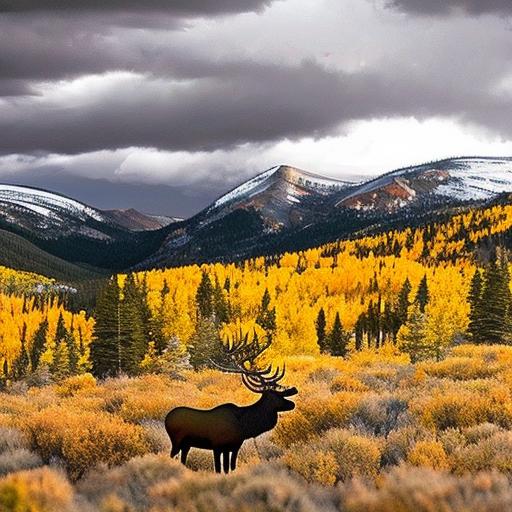
Unleashing the Thrill of Colorado Elk Hunting Season: A Guide to Bagging Your Trophy

Elk hunting season in Colorado is a highly anticipated time for hunters from all over the country. With its vast wilderness and abundant elk population, Colorado offers some of the best hunting opportunities in the United States. The season typically runs from late August to early November, with different hunting methods and regulations depending on the specific season and location.
Elk hunting has become a popular activity in Colorado for several reasons. First and foremost, the state is home to one of the largest elk populations in North America, making it a prime destination for hunters looking to bag a trophy bull. Additionally, Colorado’s diverse landscapes, ranging from high alpine meadows to thick forests, provide a variety of hunting experiences and challenges. Finally, the state’s commitment to wildlife conservation and management ensures that elk populations remain healthy and sustainable for future generations.
Key Takeaways
- Colorado Elk Hunting Season runs from late August to early February
- Elk are social animals and follow a seasonal migration pattern
- Essential gear for elk hunting includes a rifle, binoculars, and proper clothing
- Planning your trip in advance and scouting your location can increase your chances of success
- Hunting ethics and safety measures, such as proper shot placement and respecting private property, are crucial for a successful and responsible hunt.
Understanding Elk Behavior and Habits
To increase your chances of a successful hunt, it is important to understand elk behavior and habits. Elk behavior can vary depending on the season. During the summer months, elk tend to stay at higher elevations where they can find ample food and escape the heat. As fall approaches, they begin their annual migration to lower elevations in search of mating opportunities.
One of the key skills for elk hunting is being able to identify elk tracks and signs. Elk tracks are typically larger than deer tracks and have a distinct shape with a rounded front and pointed back. Look for fresh tracks in areas where elk are likely to feed or travel, such as meadows or along game trails. Other signs of elk activity include rubs on trees, wallows (muddy areas where elk roll), and droppings.
Spotting and tracking elk can be challenging due to their ability to blend into their surroundings. One tip is to use binoculars or spotting scopes to scan open areas such as meadows or clearings where elk may be feeding. Look for movement or the flicker of an ear or tail. When tracking elk, pay attention to the wind direction and try to stay downwind of the animals to avoid detection. Move slowly and quietly, using natural cover to hide your movements.
Essential Gear and Equipment for Elk Hunting
Having the right gear and equipment is crucial for a successful elk hunting trip. First and foremost, invest in quality clothing and footwear that will keep you warm, dry, and comfortable in a variety of weather conditions. Layering is key, as temperatures can fluctuate throughout the day. Opt for moisture-wicking base layers, insulating mid-layers, and a waterproof outer shell.
In terms of hunting gear and equipment, a few essentials include a backpack to carry your gear, a good quality hunting knife for field dressing, binoculars or a spotting scope for scouting, and a range finder to accurately judge distances. Additionally, consider bringing a GPS device or compass to navigate through unfamiliar terrain, as well as a headlamp or flashlight for early morning or late evening hunts.
When it comes to firearms and ammunition, choose a rifle that is suitable for elk hunting. The .270 Winchester, .30-06 Springfield, and .300 Winchester Magnum are popular choices among elk hunters. Make sure to practice shooting at various distances to become familiar with your rifle’s capabilities. As for ammunition, opt for premium bullets designed for big game hunting to ensure ethical kills.
Planning Your Elk Hunting Trip: Tips and Tricks
| Topic | Metric |
|---|---|
| Location | State, National Park, or Wilderness Area |
| Time of Year | Season, Month, and Time of Day |
| Weather | Temperature, Precipitation, and Wind |
| Equipment | Rifle, Bow, Clothing, and Camping Gear |
| Physical Fitness | Endurance, Strength, and Altitude Acclimation |
| Guides and Outfitters | Experience, Reputation, and Cost |
| Hunting Regulations | Licenses, Tags, and Bag Limits |
| Preparation | Training, Research, and Packing |
| Safety | Bear Spray, First Aid, and Emergency Communication |
Planning your elk hunting trip requires careful consideration of several factors. First and foremost, choose the right time to go elk hunting. The season in Colorado typically runs from late August to early November, with different seasons for archery, muzzleloader, and rifle hunts. Research the specific dates and regulations for the area you plan to hunt in.
Once you have determined the time frame for your hunt, it’s important to plan your trip accordingly. Consider factors such as travel logistics, accommodations, and any necessary permits or licenses. If you are planning a DIY hunt, make sure to familiarize yourself with the area and obtain any necessary maps or information.
Finding the best hunting spots in Colorado can be a challenge, especially if you are unfamiliar with the area. One tip is to start by researching popular hunting locations and talking to local hunters or outfitters for recommendations. Additionally, consider scouting the area before your hunt to familiarize yourself with the terrain and identify potential hunting spots.
Choosing the Right Hunting Location in Colorado
Colorado offers a wide range of hunting locations for elk hunters. Some of the most popular areas include the San Juan Mountains in the southwest part of the state, the Flat Tops Wilderness in northwest Colorado, and the White River National Forest near Meeker. These areas are known for their large elk populations and diverse landscapes.
When choosing a hunting location, there are several factors to consider. First and foremost, look for areas with a high concentration of elk. This can be determined by researching population data or talking to local hunters or wildlife biologists. Additionally, consider the accessibility of the area and whether it requires a long hike or a difficult terrain to reach.
Scouting and exploring new hunting locations can be a rewarding experience. Before your hunt, spend some time hiking or driving through the area to familiarize yourself with the terrain and identify potential hunting spots. Look for signs of elk activity such as tracks, rubs, or droppings. Pay attention to areas with ample food sources such as meadows or clearings.
Tracking and Stalking Elk in Their Natural Habitat

Tracking and stalking elk in their natural habitat requires patience, skill, and knowledge of their behavior. When approaching elk, it is important to do so without being detected. Elk have keen senses of smell, hearing, and sight, so it is crucial to stay downwind, move quietly, and use natural cover to hide your movements.
Stalking elk can be a challenging but rewarding experience. One tip is to move slowly and deliberately, taking advantage of natural features such as trees or rocks to hide your movements. Avoid making sudden movements or noise that could alert the elk. Use binoculars or a spotting scope to keep an eye on the elk’s movements and adjust your approach accordingly.
Tracking elk in different terrains requires different strategies. In open areas such as meadows or clearings, it is important to stay low and use the terrain to your advantage. Move from one patch of cover to another, using natural features such as hills or dips in the terrain to hide your movements. In dense forests or thick brush, move slowly and quietly, scanning for any signs of elk activity.
Hunting Ethics and Safety Measures for Elk Hunting
Hunting ethics and safety measures are of utmost importance when it comes to elk hunting. It is crucial to hunt responsibly and ethically to ensure the sustainability of elk populations and maintain a positive image of hunting in the eyes of the public.
One of the most important aspects of hunting ethics is ensuring a humane kill. This can be achieved by practicing shooting skills and only taking shots within your effective range. It is important to aim for vital organs such as the heart or lungs to ensure a quick and clean kill. Additionally, make sure to follow all regulations regarding tagging and reporting your harvest.
Safety should always be a top priority when hunting. Make sure to familiarize yourself with firearm safety rules and always treat your firearm as if it is loaded. Be aware of your surroundings and never shoot unless you have a clear and safe shot. Additionally, wear blaze orange clothing to make yourself visible to other hunters in the area.
Field Dressing and Processing Your Elk Meat
Field dressing an elk is an essential skill that every hunter should know. Field dressing involves removing the internal organs of the animal to cool the meat and prevent spoilage. It is important to field dress the elk as soon as possible after the kill to ensure the quality of the meat.
To field dress an elk, start by making a shallow cut from the base of the sternum to the anus. Be careful not to puncture any organs. Next, make a circular cut around the anus and carefully remove it along with the surrounding tissue. Cut through the diaphragm and carefully remove the internal organs, being careful not to puncture the stomach or intestines.
After field dressing, it is important to cool the meat as quickly as possible. Hang the elk in a cool, shaded area and allow it to cool for several hours. Once cooled, you can begin processing the meat into various cuts such as steaks, roasts, or ground meat.
Preserving and Cooking Your Elk Meat: Recipes and Techniques
Elk meat is known for its lean and flavorful qualities, making it a popular choice among hunters and food enthusiasts alike. There are several techniques and recipes that can be used to preserve and cook elk meat.
When it comes to preserving elk meat, one popular method is freezing. Make sure to wrap the meat tightly in plastic wrap or freezer paper to prevent freezer burn. Another option is to can or jar the meat, which can extend its shelf life and provide a convenient way to store and use it.
When cooking elk meat, it is important to keep in mind that it is leaner than beef or pork, which means it can dry out if overcooked. One tip is to marinate the meat before cooking to add flavor and help tenderize it. Additionally, consider using moist cooking methods such as braising or slow cooking to keep the meat moist and tender.
There are countless delicious recipes that can be made with elk meat. Some popular options include elk steaks with a red wine reduction, elk chili, or elk burgers. Experiment with different seasonings and cooking techniques to find your favorite way to enjoy this flavorful and nutritious meat.
Making the Most of Your Elk Hunting Experience: Memories and Lessons Learned
Elk hunting is not just about the harvest; it is also about the experience and the memories made along the way. Take the time to appreciate the beauty of the wilderness, the thrill of the hunt, and the camaraderie with fellow hunters.
Reflecting on your elk hunting experience can provide valuable lessons and insights. Take note of what worked well and what could be improved for future hunts. Consider keeping a journal to document your experiences, including details such as weather conditions, hunting strategies, and memorable moments.
Finally, make the most of your elk hunting memories by sharing them with others. Whether it’s through storytelling, photographs, or videos, sharing your experiences can help preserve the tradition of hunting and inspire others to get involved. Remember that hunting is not just a sport; it is a way to connect with nature, challenge yourself, and create lasting memories.
If you’re planning a Colorado elk hunting trip, you might also be interested in learning about the best time of day to hunt grouse. Grouse hunting can be a thrilling and challenging experience, and knowing the optimal time to pursue these birds can greatly increase your chances of success. Check out this informative article on the Old Oak Syndicate website to discover the best strategies for hunting grouse: https://oldoaksyndicate.com/best-time-of-day-to-hunt-grouse-2/. Happy hunting!
FAQs
What is the Colorado elk hunting season?
The Colorado elk hunting season is a designated time period during which hunters are allowed to hunt elk in the state of Colorado.
When does the Colorado elk hunting season take place?
The Colorado elk hunting season typically takes place from late August to early November, with specific dates varying from year to year.
Who is eligible to participate in the Colorado elk hunting season?
Anyone who holds a valid hunting license and elk tag is eligible to participate in the Colorado elk hunting season.
What are the regulations for hunting elk in Colorado?
The regulations for hunting elk in Colorado include specific hunting dates, bag limits, and weapon restrictions. Hunters must also follow safety guidelines and obtain any necessary permits.
What is the bag limit for elk during the Colorado hunting season?
The bag limit for elk during the Colorado hunting season varies depending on the specific hunting unit and type of tag held by the hunter.
What types of weapons are allowed during the Colorado elk hunting season?
The types of weapons allowed during the Colorado elk hunting season include rifles, shotguns, muzzleloaders, and archery equipment.
What is the success rate for elk hunting in Colorado?
The success rate for elk hunting in Colorado varies depending on a variety of factors, including hunting location, weather conditions, and hunting experience. On average, the success rate for elk hunting in Colorado is around 20-30%.

Herb has been a longtime lover of the outdoors. Whether it be hunting, camping, fishing or just getting outside to reset. Proud father and animal lover. Bourbon anyone?

by
Tags:
Comments

Categories
- Big Game Hunting (301)
- Deer (202)
- Reviews (3)
- Shooting (16)
- Slingshot (1)
- Small Game Hunting (42)
- Upland Hunting (126)
- Waterfowl Hunting (3)

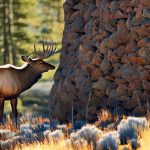
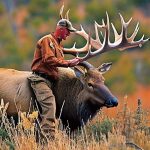
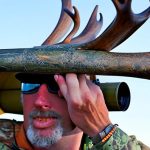
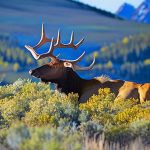
Leave a Reply